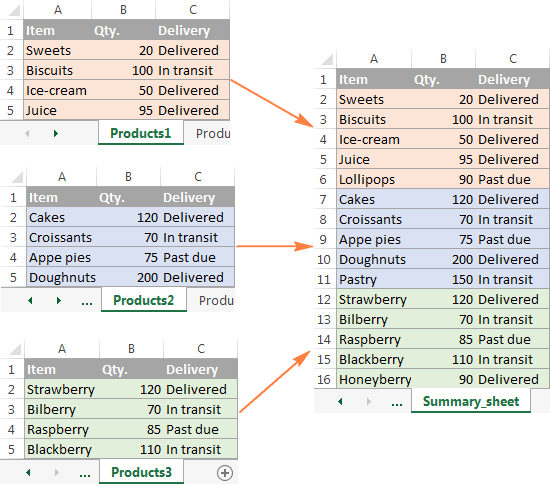5 Ways to Reference Different Sheets in Excel Easily

Whether you're a business professional, data analyst, or simply managing personal finances, the ability to reference data from different sheets within an Excel workbook is a fundamental skill. Excel offers numerous tools and techniques to streamline data analysis, organization, and reference between sheets. Here, we will dive into five ways to reference different sheets in Excel, making your data management more efficient and error-free.
1. Direct Cell Reference

The most straightforward method to reference data from another sheet is using the direct cell reference. Here’s how you can do it:
- Navigate to the cell where you want to display the data.
- Type in the equals sign (=) to start a formula.
- Click on the sheet tab where your data is located.
- Select the cell you wish to reference.
- Press Enter, and your reference is now complete.
For example, if you’re in Sheet2 and you want to reference cell A1 from Sheet1, you would enter the formula:
=Sheet1!A1
⚠️ Note: This method updates dynamically if you change the value in the referenced cell.
2. Name Manager for Sheet References

The Name Manager is a powerful feature for creating named ranges that can span across different sheets, making your formulas more readable:
- Go to the Formulas tab in Excel.
- Choose ‘Define Name’ or ‘Name Manager’ to create a new named range.
- Type the name for your range, for instance, ‘Sheet1Data’.
- In the ‘Refers To’ box, enter the formula referencing the sheet and cell(s) like: =Sheet1!A1:A10
- Click OK. Now, you can use ‘Sheet1Data’ in your formulas, which simplifies your work.
This approach reduces errors, makes your workbooks more manageable, and can help others understand your references better. For example:
=SUM(Sheet1Data)
3. Using INDIRECT Function for Dynamic References

The INDIRECT function allows you to create dynamic cell references that adjust based on a text string. Here's how:
- Enter the INDIRECT function as part of your formula:
- For example, =INDIRECT("Sheet1!A1") would reference A1 from Sheet1.
- You can combine this with other functions to pull data from different sheets based on criteria.
This technique is particularly useful in scenarios where you need to reference sheets dynamically, such as when using VBA or building dashboards:
=INDIRECT("'"&B1&"'"&"!A1")
Where B1 contains the name of the sheet.
4. 3D References for Consolidated Data

If you’re dealing with similar data across multiple sheets, 3D references can consolidate data seamlessly:
- Select the first cell where you want the formula result to appear.
- Type in the equals sign (=), then click on the first sheet tab.
- Select the cell range on the first sheet, then type a comma.
- Click on the last sheet in your range, and select the same cell range. For instance, =SUM(Sheet1:Sheet3!A1:A10).
- Enter to compute the sum across all sheets.
Here’s a concise table showing how to use 3D references:
| Action | Example |
|---|---|
| Sum Cells from multiple sheets | =SUM(Sheet1:Sheet3!A1) |
| Calculate Average | =AVERAGE(Sheet1:Sheet3!B2:B5) |

🔍 Note: 3D references are very useful for creating summaries from multiple sheets but require all sheets to have the same structure.
5. VBA to Automate Sheet References

For power users, VBA (Visual Basic for Applications) offers unparalleled control:
- Open the VBA editor by pressing Alt + F11.
- Create a new module by selecting Insert > Module.
- Write a sub or function that references data from different sheets.
- Run your VBA code to perform complex sheet operations automatically.
An example of a simple VBA procedure to reference a cell value:
Sub GetValueFromSheet()
MsgBox Worksheets(“Sheet1”).Range(“A1”).Value
End Sub
Writing VBA scripts can save time when referencing complex data arrangements across multiple sheets, making Excel a powerful tool for dynamic data handling.
Summarizing the key methods, we have explored direct cell references, using Name Manager for organized data referencing, leveraging the INDIRECT function for dynamic cell references, utilizing 3D references for consolidated data, and employing VBA for automated sheet referencing. Each method offers unique advantages, and understanding when to apply each can significantly enhance your Excel proficiency. By mastering these techniques, you can make your data manipulation more efficient, reducing errors and ensuring your workbooks are more maintainable. Keep in mind that practice is key to perfecting these skills, so don't shy away from experimenting with different combinations to see what works best for your specific scenarios.
How do I reference a cell from a different sheet in Excel?

+
To reference a cell from a different sheet in Excel, start by typing the equals sign (=) in the formula bar, then click on the sheet tab of the target sheet, select the desired cell, and press Enter. For example, ‘=Sheet1!A1’ references cell A1 from Sheet1.
What’s the advantage of using named ranges over direct cell references?

+
Named ranges make formulas more readable and maintainable, especially in complex workbooks. They reduce errors when sheets are renamed or when ranges are expanded, as they can be updated in the Name Manager without changing every formula.
Can I use Excel formulas to reference data across multiple workbooks?

+
Yes, you can reference data from other workbooks using external references. However, for a comprehensive explanation, consider this requires understanding of Excel’s capabilities beyond referencing within a single workbook.
How do 3D references work in Excel?

+
3D references in Excel allow you to reference the same cell or range across multiple sheets. By specifying a range of sheets like ‘Sheet1:Sheet3!A1’, you can perform operations like SUM, AVERAGE, etc., across these sheets simultaneously.



